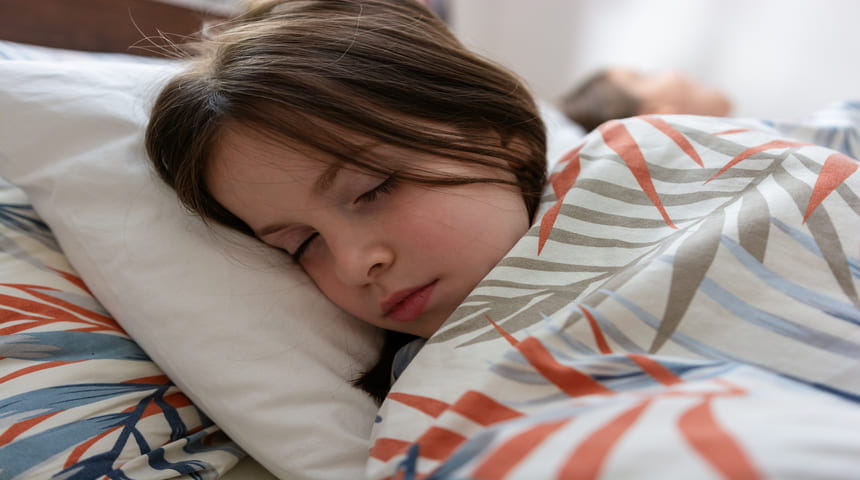The unexpected, intense fear and physical symptoms of a panic attack can be terrifying for you and your child. But they are not unusual in teens and are treatable.
Signs of a Panic Attack
A panic attack is a brief episode of severe anxiety that usually peaks at 10 minutes and passes by 30 minutes. To be diagnosed with a panic attack, your child has to have four of the following symptoms:
- Racing heartbeat
- Chest feels tight
- In older kids, feels like a heart attack
- Significant difficulty breathing
- Feeling of terror and being immobilized
- Dizziness
- Nausea
- Cold sweats
- Trembling or shaking
- Tingling in fingers and toes
- Feeling like they are about to go crazy
- Feeling like they are about to die
If your child has any of these symptoms, do not assume they are experiencing a panic attack. It is critical that they first are evaluated by their pediatrician or in the emergency department to rule out serious medical conditions. If there is no medical explanation, the symptoms likely are indicative of a panic attack.
Causes of Panic Attacks
Panic attacks are common in early and late adolescence. They are rooted in anxiety and tend to occur when big life events that are expected to be stressful are looming. For kids, that may be the transition to middle or high school, the death of a loved one or problems with friendships and relationships. Panic attacks usually are not the result of an emergency or something unexpected, and they rarely occur in children ages 8 and younger.
Is My Child at Risk for Panic Attacks?
Risk factors for anxiety disorders in children and adolescents include:
- Low socioeconomic status
- Exposure to violence
- Trauma
- Your child’s temperament
- Parental anxiety
In the past decade, there has been increasing concern about the impact of social media use on the development of anxiety disorders in children and adolescents. Fear of missing out and seeking validation can lead to increases in general anxiety symptoms (more common in boys) and anxiety around body image (more common in girls). Cyberbullying also is a concern and has been linked to increased anxiety.
Panic Disorder
A panic attack develops into panic disorder when children or teens worry so much about having another attack that they begin to avoid places or situations that they associate with them. More than 3 million Americans will experience panic disorder during their lifetime. Panic disorder often begins during adolescence, although it can start during childhood, and sometimes runs in families.
If not recognized and treated, panic disorder and its complications can be devastating. Panic attacks can interfere with your child's relationships, schoolwork and normal development. Attacks can lead not just to severe anxiety but also can affect other parts of your child's mood or functioning. Children and adolescents with panic disorder may start to feel anxious most of the time, even when they are not having panic attacks.
Some youths with panic disorder can develop severe depression and may be at risk of suicidal behavior. As an attempt to decrease anxiety, some adolescents with panic disorder may use alcohol or drugs.
Treating Panic Disorder
When properly evaluated and diagnosed, panic disorder usually responds well to treatment. Children and adolescents with symptoms of panic attacks should first be evaluated by their family physician or pediatrician. If no other physical illness or condition is found as a cause for the symptoms, the next step is a comprehensive evaluation by a child and adolescent psychiatrist.
Research shows that the most successful treatment for panic disorder is a combination of antidepressant medication and cognitive behavioral therapy (CBT). Many healthcare providers recommend CBT first with medication added if necessary to make your child comfortable enough to participate in CBT.
The provider starts by working with your child to think more flexibly about their anxiety. Rather than viewing the physical symptoms as dangerous, they practice tolerating them, knowing that the symptoms are not harmful. As the fear of attacks diminishes, the attacks themselves grow less severe and less frequent.
Antidepressants called selective serotonin reuptake inhibitors (SSRIs) can make your child less reactive to events that have triggered panic attacks. By reducing the intensity of panic attacks, your child is likely to have fewer panic attacks.
How Parents Can Help
If your child is experiencing a panic attack, remain calm and speak in soothing tones. Do your best to reassure them this soon will pass and they are safe. Do not argue with your child. Help them find a quiet, private area while they are having the attack.
Choose to Stay in Touch
Sign up to receive the latest health news and trends, wellness & prevention tips, and much more from Orlando Health.
Sign Up










